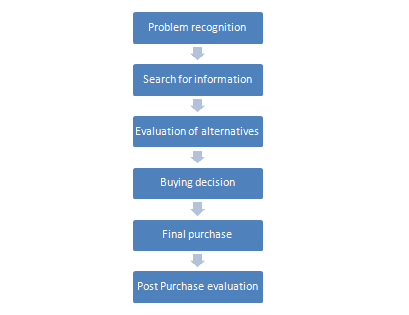Table of Contents
What is Buying Pattern Analysis?
Buying pattern refers to the consumer’s purchase pattern and can be defined as “the characteristic way in which consumers purchase products or services in terms of quantity, frequency, timing, etc. Buying behavior of a consumer and depends on various factors and hence is not consistent. Studying this buying pattern of consumers is called Buying Pattern Analysis.
For example, a consumer, who is single, might be used to buying a particular brand of the pulse every once in a month from a particular shop. However, when he gets married, the numbers of family members increase and thus he might have to double the number of pulses purchased or buy the same amount of pulse twice in a month. Thus, we see that his buying pattern i.e. frequency and quantity change according to circumstances. Studying this pattern would help businesses target more consumers.
Types of consumer buying pattern
1. Minor repurchase
This kind of purchase is done routinely and consumers return to the same product unconsciously. For example, buying the same brand of soft drink
2. Minor new purchase
Though these kinds of purchase are new to the consumer, the consumer knows about the product category. For example, buying clothes from a new brand comes under this. The buying pattern here needs the moderate amount of time and effort.
Discover how analyzing buying patterns can boost your business growth.
Quick Statistic: Companies leveraging customer behavioral insights outperform competitors by 85% in sales growth and more than 25% in gross margin, according to a 2021 report by McKinsey & Company. (Source: McKinsey & Company, “The need to lead in data and analytics”, 2021)
Quick Tip: Regularly analyze consumer buying patterns to adapt your product offerings and marketing strategies, ensuring you meet evolving customer needs and stay ahead of market trends.
3. Major new purchase
In this kind of purchase, the consumer has no previous experience and thus is clueless. This kind of purchase is very important to the consumer and this is one of the most difficult types if consumer buying pattern. A simple example here would be a consumer deciding to buy a Sedan. Since he has no prior experience of purchasing a sedan, he would need to gather considerable information, evaluate them carefully and then decide.
4. Major re-purchase
These kinds of purchase, though important to the consumer, are easier to make since the consumer has prior experience. Upgrading from an old laptop to a new one would come under this category.
Why is Buying pattern analysis important?
The reasons for a change in the buying pattern of consumers can be multi-fold and hence it becomes imperative for businesses to keep a tab on this changing buying pattern of their target consumers. It is commonly known that key to a flourishing marketing strategy lies in understanding buyer behavior.
Hence, it becomes crucial for businesses to understand buying pattern of their target consumers and craft their marketing strategies around it. Another reason for understanding the buying pattern is that it helps in crafting a successful marketing mix strategy that will help businesses meet the need and wants of their target consumers.
The stages of Buying are as follows
There are 6 stages of consumer buying behavior. The image below adequately represents the various kinds of buying pattern that a consumer follows:
Process of Buying Pattern Analysis
1. Problem recognition
This is the first stage of the consumer buying pattern and involves the consumer identifying his needs and wants. The act of identifying the need can be internal or external. When the consumer identifies his needs on his own, it is called as internal stimuli. An example here would be the customer’s old Television set breaking down and the customer realizing that he needs to buy a new television set.
On the other hand, when a business makes the customer realize that he can choose from LCD, CRT or Plasma television sets; this would be called as external stimuli. External stimuli are always triggered by an advertisement while internal stimuli are a result of a genuine need of the consumer.
Businesses can target external stimuli by gathering information about target consumers needs and then creating and marketing a product that would take into account these stimuli.
2. Search for information
Once a consumer has identified his problem, he starts searching for information that would address his problem. Information can be searched by the discussion with friends, family, and experts. It can also be gathered from commercial sources such as advertising campaigns, displays, discussions with salesmen and others.
A consumer can also gather information from public sources such as consumer rating organizations or mass media. An important aspect to remember here is the effort consumers might take to search for information for products they intend to purchase. A simple rule of thumb here would be that the efforts to search for information for products that are inexpensive and trivial would be far less than for products that are expensive.
3. Evaluation of alternatives
The efforts taken to search for information will yield some options for the consumers. Now, the consumer has to evaluate all the available options. When evaluating options, consumers have to decide on two levels – Product type and brand. They have to create a set of potential solutions for their needs and then assess various brands that would meet their need.
In the first example of a customer deciding on buying a new television set, he would have to first evaluate which type of Television set he wants – i.e. Plasma, CRT, LCD or LED; and then evaluate various brands. While evaluating his alternatives, a consumer considers various aspects such as features of the product, advantages of the product, importance of every advantage, cost of the product as well as the satisfaction that would be gained by investing in the product.
4. Final buying decision
This stage involves the consumer’s decision about which product to purchase or not purchase at all. It also involves decisions such as from where and when to buy the product and how to pay for the product. In this stage, the consumer – who finally decides to buy to buy a product – goes with the product that got the highest points while evaluating multiple products and brands.
5. Post-purchase evaluation
This stage involves the consumer evaluating the product after purchase. This stage too is critical and cannot be ignored by businesses since a product that performs well in the post-purchase evaluation will be viewed positively by the consumer while a product that performs poorly will either be returned or viewed negatively by the consumer.
To help consumers at the final stage of buyer pattern, businesses need to be proactive and encourage consumers to contact their customer care executives whenever needed. Market research for this stage too would help businesses get a pulse of their consumers and thus improve on their product if needed.
Liked this post? Check out the complete series on Consumer Behavior

